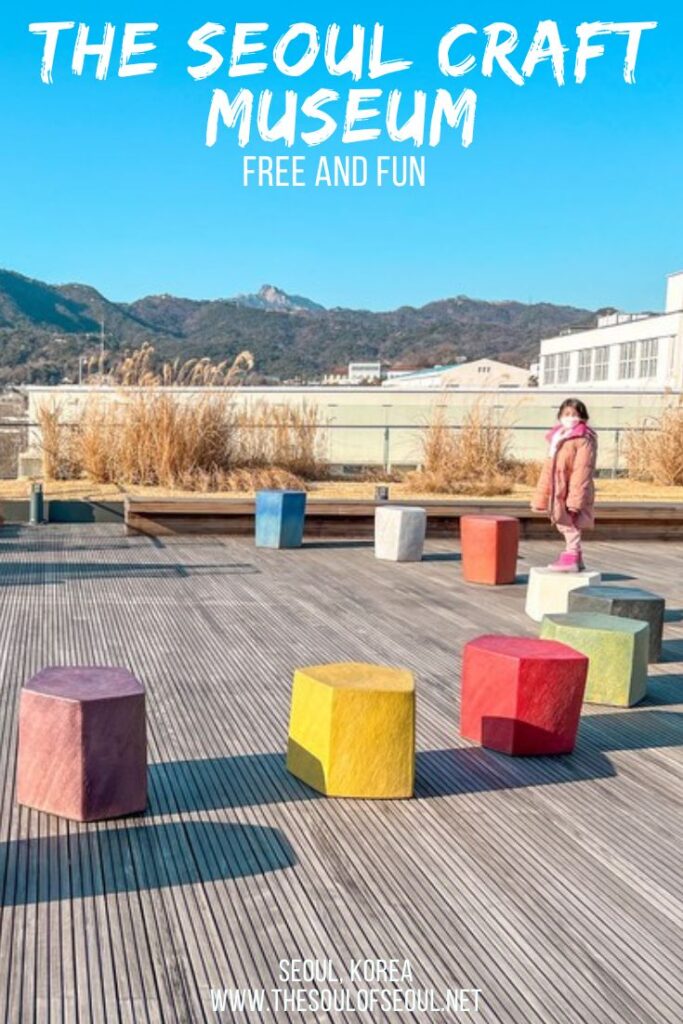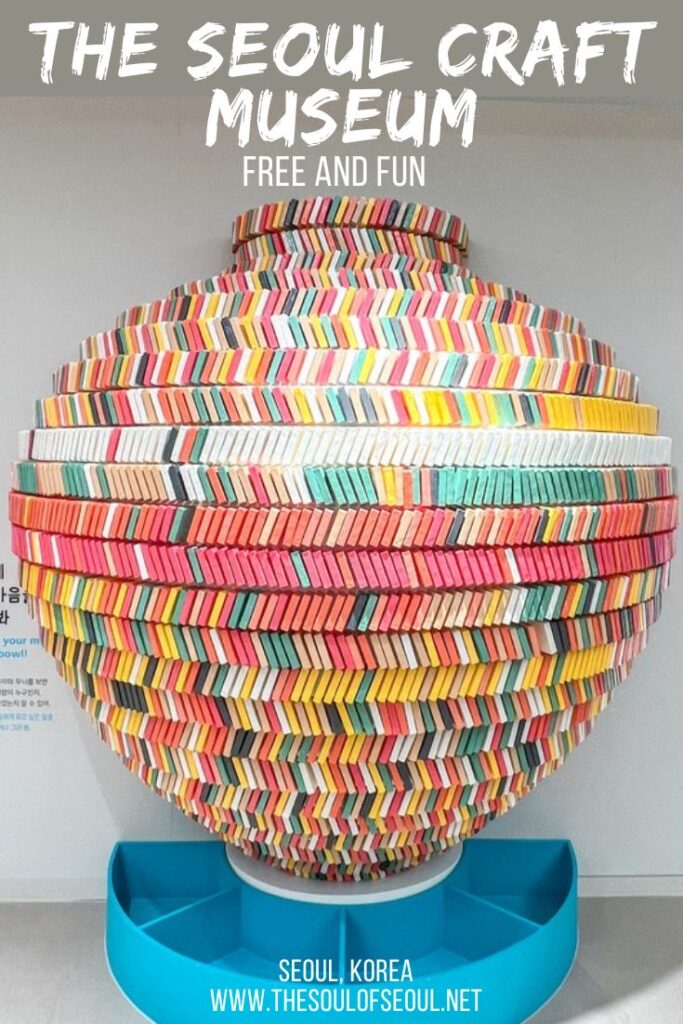A Guide To The Seoul Museum of Craft Art: Fantastic and Free
Last Updated on April 4, 2024
Opened in 2021, the Seoul Museum of Craft Art (서울공예박물관) is in the popular and touristy area downtown near modern art spaces like the Museum of Modern and Contemporary Art and the historical district of the Bukchon Hanok Village and the cultural district of Insadong.
It’s a really great museum in Seoul to visit and would especially great when it’s raining or too hot in the summer in Seoul or if you just want to learn about the Korean history of crafting which is really interesting. Oh, and did I mention that this fantastic museum is free?
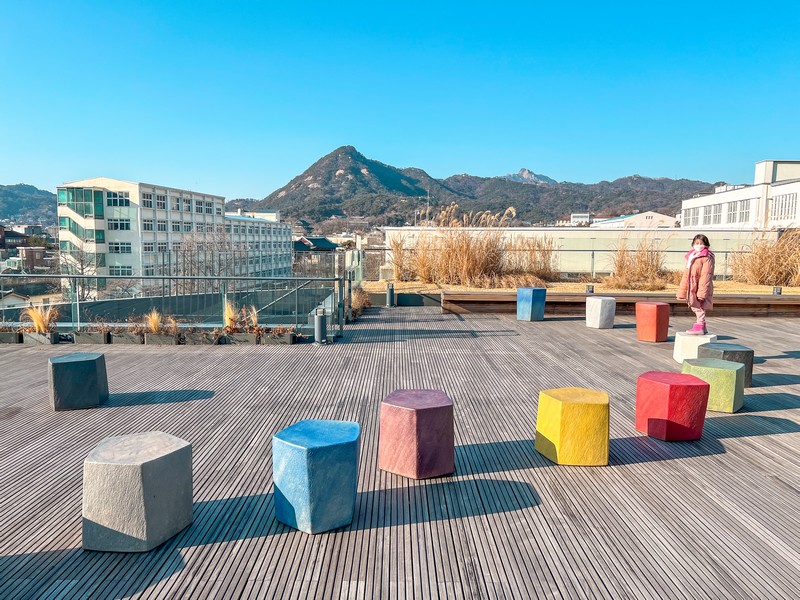
Plan your trip to the Seoul Museum of Craft Art (서울공예박물관):
(This post contains affiliate links, which means I receive a certain percentage of a sale if you purchase after clicking at no cost to you. Thank you for your support.)
How To Get There
Address: 4 Yulgok-ro 3-gil, Jongno-gu, Seoul (서울시 종로구 율곡로 3길 4)
By Public Transportation: Go to Anguk Subway Station, and go out of Exit 1 to find the museum just 50 meters away.

Basic Information
Admission: Free
Days: Closed Mondays and January 1st
Hours: 10:00am ~ 6:00pm
Reservations: Reservations are required to visit the Children’s Museum part of the complex. You can book online, but foreign guests can also call to reserve. Find more information here: https://craftmuseum.seoul.go.kr/eng/chimsm/introduce
Audio Guides: There are audio guide services available for an enhanced museum experience if you want to know more about what you’re seeing. You can pick these up in the Information Building or Lobby of Exhibition Building 1.
Craft Eye: This media pad is available to borrow as you explore the museum on your own. The interactive map on the pad guides you to the nearest highlighted exhibitions. You can pick these up in the Information Building, Lobby of the Exhibition Building 1, or Lobby of Exhibition Building 3.
Amenities:
- Lockers are available in Education Building and on the first floor of Exhibition Building 3 on the first floor.
- Baby changing rooms and nursery spaces are available in the Education Building’s 4th floor and on the first floor of Exhibition Building 3.
- Parking: Note that there is no parking available as the museum is located on the historic site of the Andong Secondary Palace. If you need to park, look for public parking nearby.
- Cafes are located in the Information Building and on the 4th floor of the Education Building.
Website: https://craftmuseum.seoul.go.kr/
What To Know
SeMoCA is the first national museum in Seoul created to showcase Korean crafts. The museum is made up of seven buildings so you need to weave in and out and around much like some of the embroidery products you’ll see inside. You’ll start in the Information Building which is connected to the Exhibition Building 1.
The Education Building has a fantastic Children’s Museum. If you have kids in Seoul, do NOT miss a visit here. The children can partake in a ton of hands on experiences. The entire museum is stunning from inside out and has a great collection not to mention it’s free for the public which is just amazing. PS if you’re interested in other budget friendly things to do in Seoul, check out this guide to the best free things to do in Seoul.

What To See
When you first enter the Information Building, you’ll notice the beautiful high walls of glass. You’ll find the museum cafe and shop here as well. Check in at the desk, if required, though that might just be a holdover from Covid for a bit, and then head into the Exhibition Building.
Exhibition Building 1
On the first floor check out the special exhibition and the informational wall and maps to figure out where to go. Walk up the steps or take the elevator to the second floor to find the permanent exhibition housing “Artisans – Making the Better World” which explores the stories and history of crafts and craftsmen of the Joseon Dynasty, Korean Empire, and Korea during the Japanese colonial period.
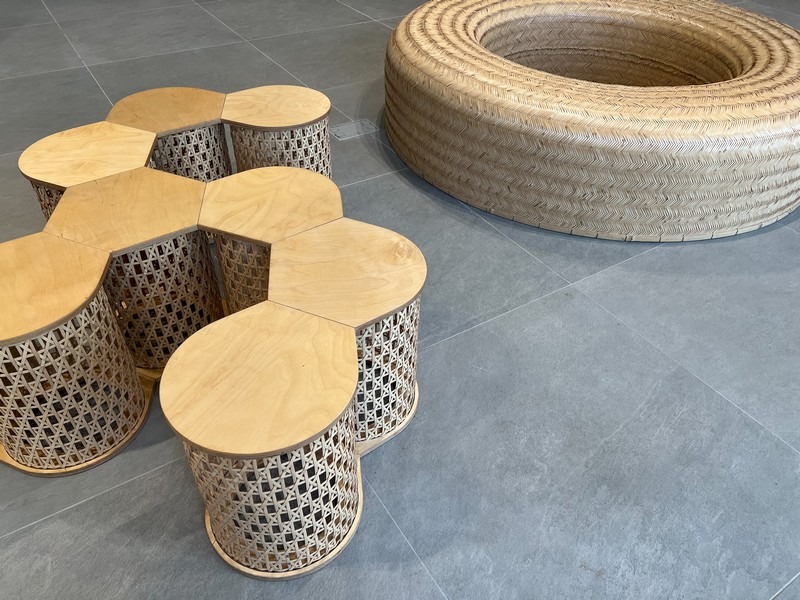
Head up to the third floor to find the special exhibition. When we visited we saw “Craft, Moving Beyond Time and Boundaries”, an exhibition that features collections and works of artisans from Korea’s liberation to the present day. Note that Exhibition Building 1 and Exhibition Building 3 connect on the 3rd floor so you can weave and walk up and down and across and back again.
Just pay attention because there’s a lot to see and you won’t want to miss anything.

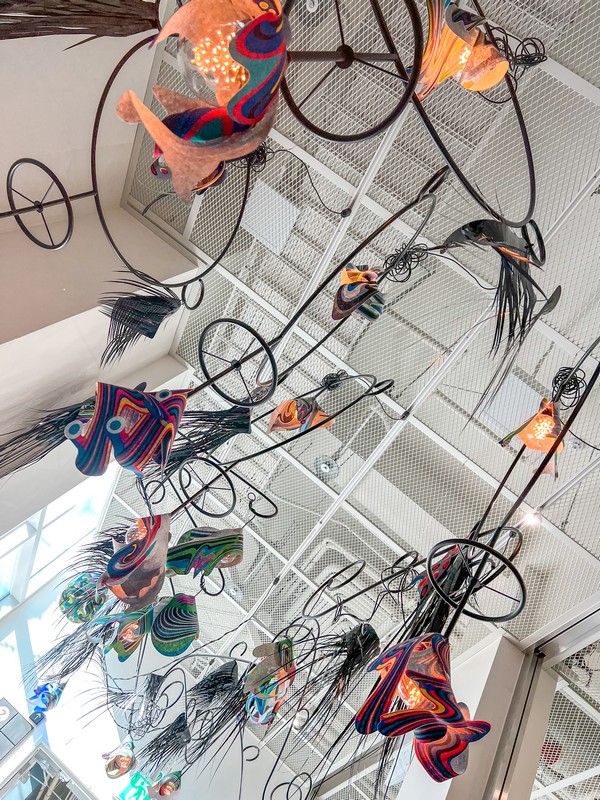
Exhibition Building 2
This building houses special exhibitions and permanent exhibitions. On the 1st floor is “Heritage of Seoul’s Traditional Crafts” devoted to the two thousand years of history of crafting in Seoul. According to the Gyeonggukdaejeon, the Great Code of State Administration, from the Joseon Dynasty, gyeonggongjang artisans made essential items for the royal family and the kingdom of Hanyang, the former name of Seoul.
They lost their foothold during the Japanese colonial period and the industrialization, there are some artisans who have inherited their skills and are still living in Korea today producing crafts and high quality products. This exhibition introduces 25 artisans designated as Seoul Intangible Cultural Assets.
I’ve been able to meet some of these artisans in Korea throughout my time and it’s amazing to think how few traditional craftsmen are left and what amazing products they create.
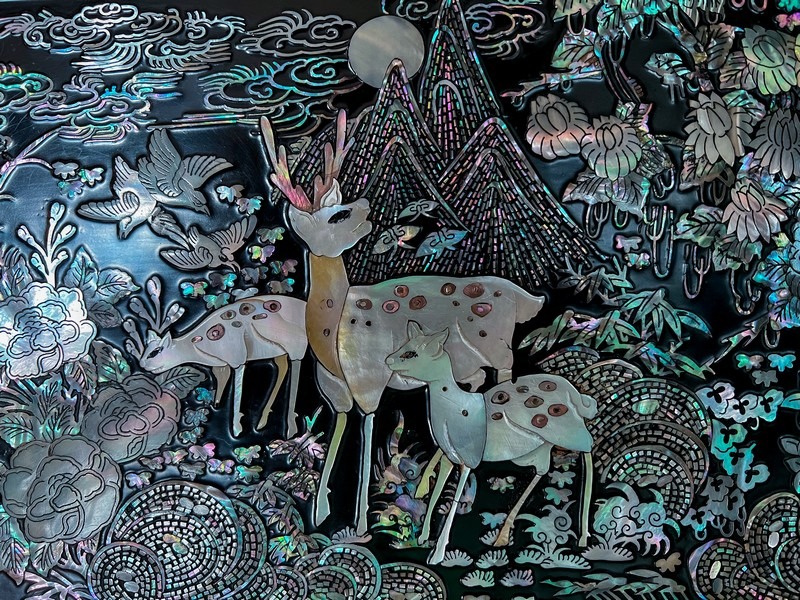
On the 2nd floor is a great introduction to Korean lacquerware, or mother-of-pearl inlaid products. Lacquerware culture has developed in Korea since the Three Kingdoms Period, but it was during the Goryeo Dynasy that najeonchilgi really flourished. “From Nature to Crafts Artisans – Creators of Craft Heritage” introduces people as they invented tools and figured out how to process materials like stone, soil, and wood and developed techniques to overcome environmental limitations. It showcases how Korea’s craft heritage went from ore to metalcraft, soil to earthenware, and wood and shells to lacquerware. Learn more about Korean mother of pearl lacquerware here.
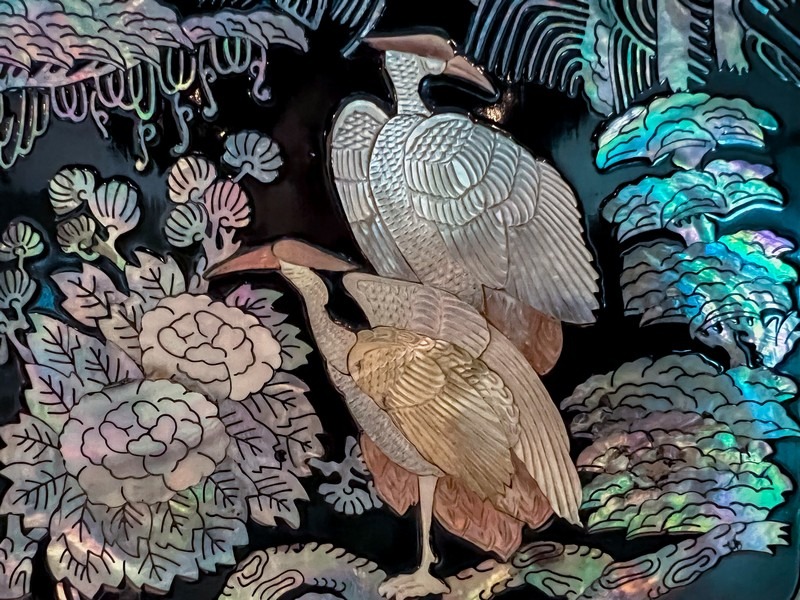
Exhibition Building 3
We loved the exhibitions here. The 2nd and 3rd floors are home to permanent exhibitions that display Korean embroidery and bojagi which is the Korean wrapping cloth. Bojagi is the oldest, most convenient craft technique and in Embroidery in Bloom you can see so many beautiful pieces donated by Huh Dong Hwa and Park Young Sook. Understood the meaning of the patterns that were created by women who used embroidery to provide meaning. There’s also a section where you can try your own hand at folding and wrapping.
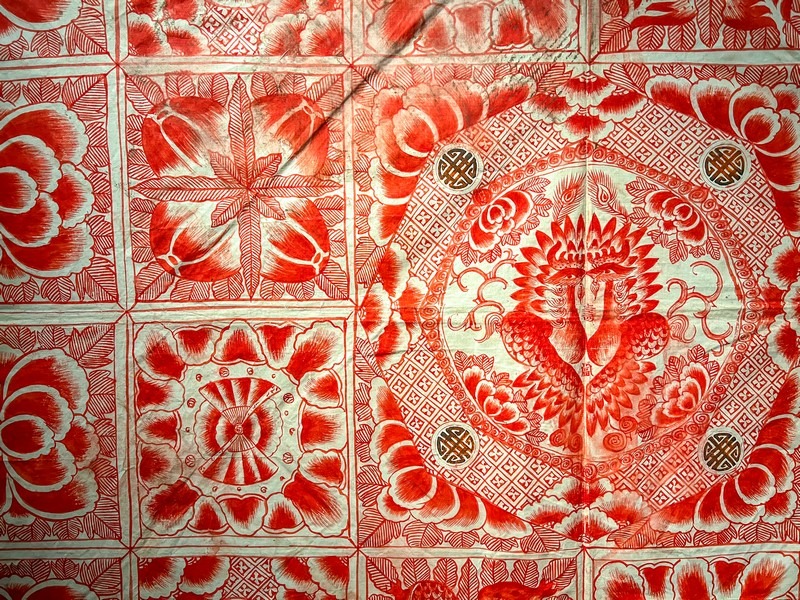
The traditional embroidery of Korea developed greatly during the Three Kingdoms Period in Korea from 57BC to 668AD. According to the Samguk Sagi, only aristocrats were permitted to wear embroidered cloth. Relics like pouches and embroidery fabric from the Goryeo period still remain today as well as artifacts from the Joseon period to modern times.
During those periods, sewing and embroidery were considered norms for women and were a social activity. There were embroidered folding screens which were the most common embroidery artifact. Most folding screens featured geese and reeds or copied famous paintings showing a distinct connection to painting which is something that weaving couldn’t accomplish. Though it took more time and effort than simply painting a folding screen, embroidery provided a three dimensional expression and became a luxury good for the wealthy in Korea.
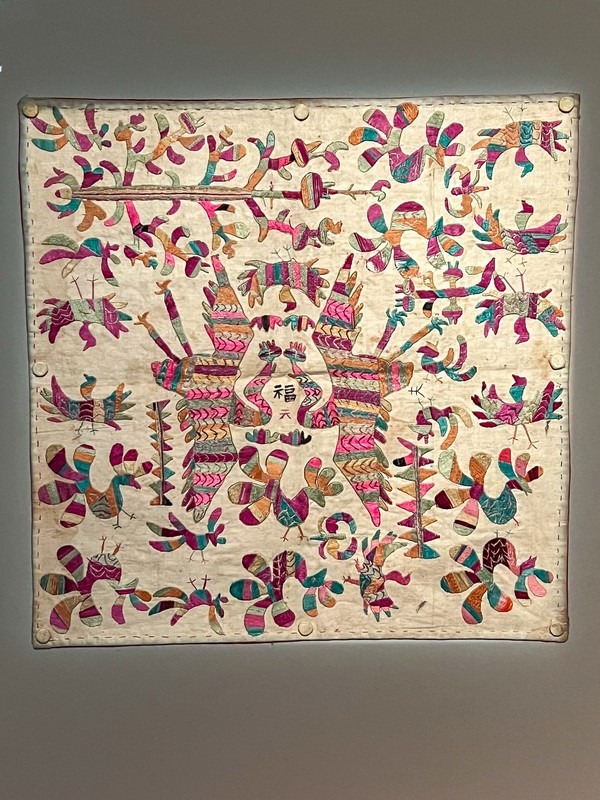

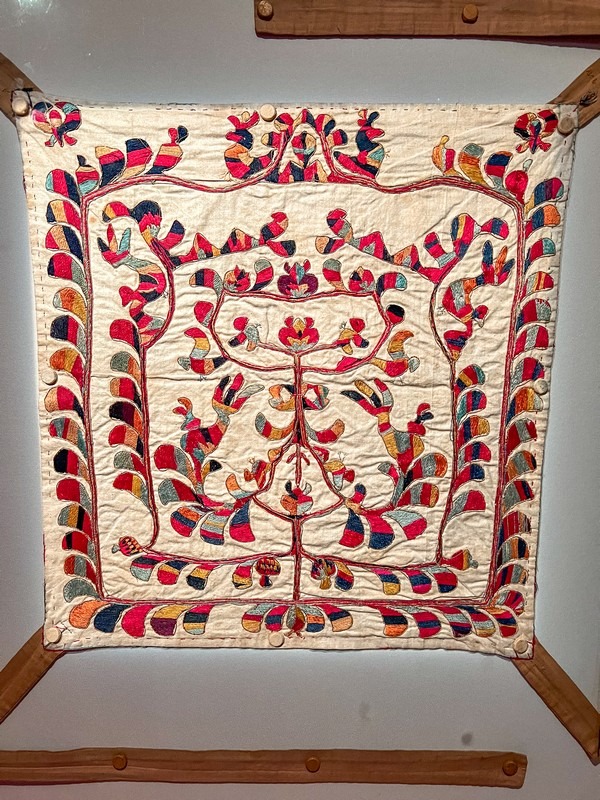

The embroidery on everyday items was a way that people expressed their hopes and aspirations. Bojagi, pockets, cloth, and shoes became commonly embroidered items as a symbol of prosperity, longevity, and fortune. Though there is a long history of embroidery in Korea, there are less and less embroidery makers today.
Bojagi is a rectangular shaped cloth. It’s an eco-friendly way to carry things around and is still used when gifting in Korea. Jasu bojagi, that you can see in the exhibition, are embroidered and colored cloth, usually cotton or silk, usually made from one or one and a half pok (or 40cm approximately). Many patterns of this kind feature birds and trees to represent the beauty of nature and life.
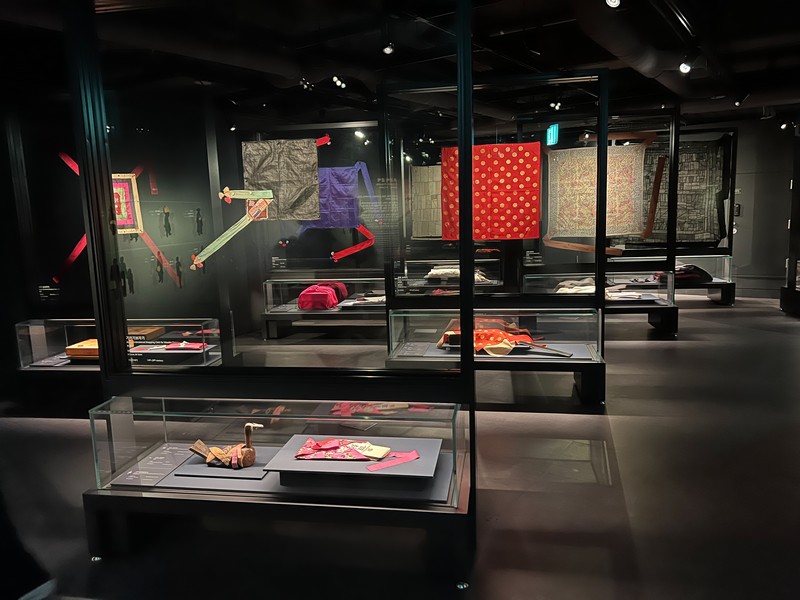

Historic records show that bojagi has been used since ancient times. The main use of small bojagi that were about 70cm in length was to wrap valuables where as larger bojagi, about 100cm or so was to wrap cloth, blankets, and furniture for storage. The larger ones were generally made from hemp, ramie, or cotton as they needed to be more durable.
Another style of bojagi is the jogak-bo which is a kind of quilting and made with piecing cloth together. Each piece of cloth maintains its original color, texture and pattern.
Education Building
The Education Building is mainly devoted to the Children’s Museum, but there’s also a cafe on the 4th floor and a great observatory on the roof that you can go to if you want to skip the children’s areas. FYI, the children’s museum requires a reservation so make sure you do that if you plan on taking the kiddos. The 2nd and 3rd floors both have the Craft Village devoted to the kids and provide them with some great experiences to learn more about crafting.
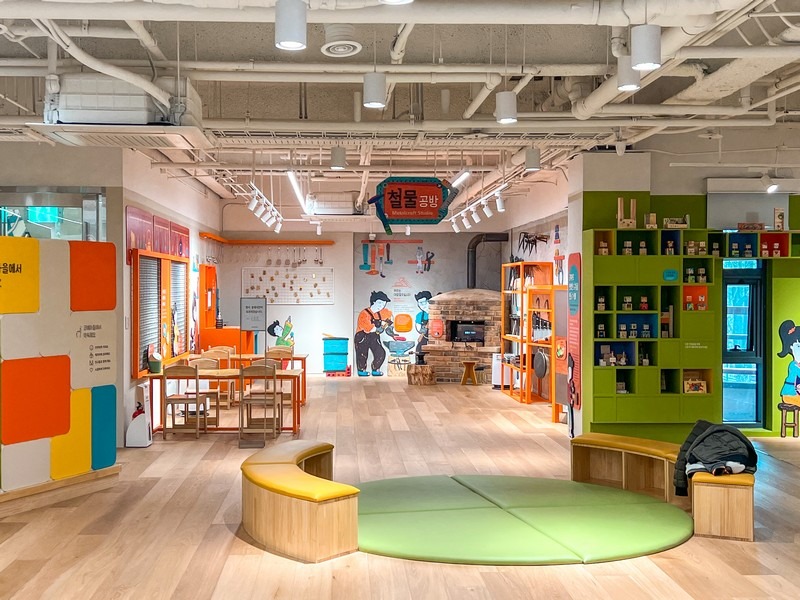
On the 2nd floor find the Ceramic Studio, Woodcraft Studio, and Metalcraft Studio. The exhibitions are meant to help children understand the value in making something and they get hands on experiences with various materials, tools, and techniques. On the 3rd floor is the Clothes Studio and the Open Studio. The Open Studio is for special craft activities. We found a lot of textile play.
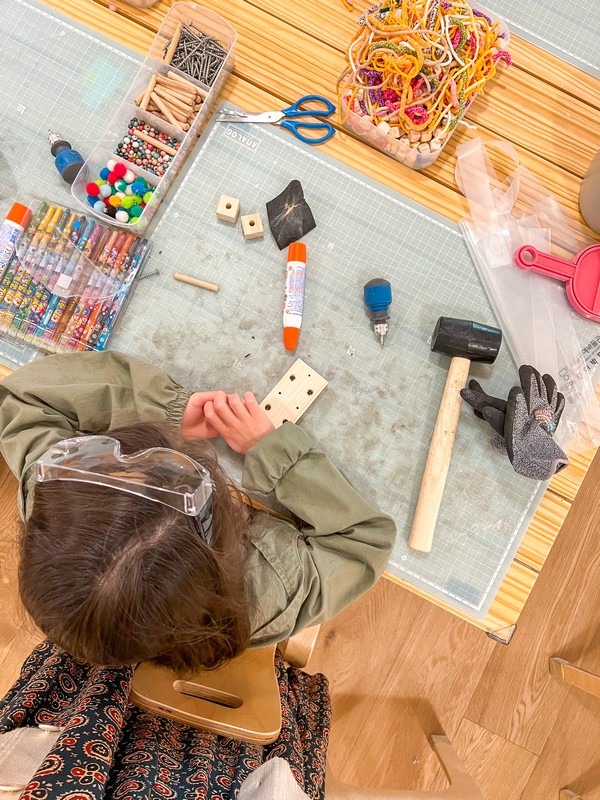
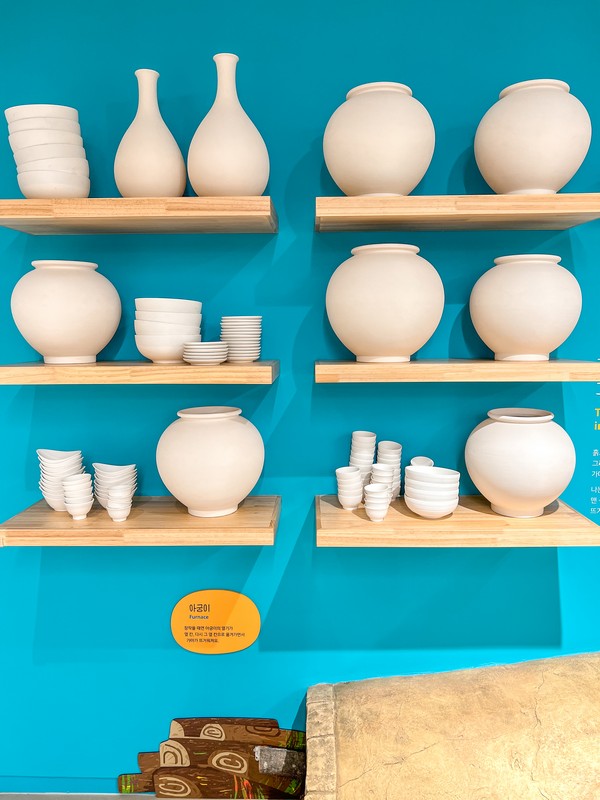

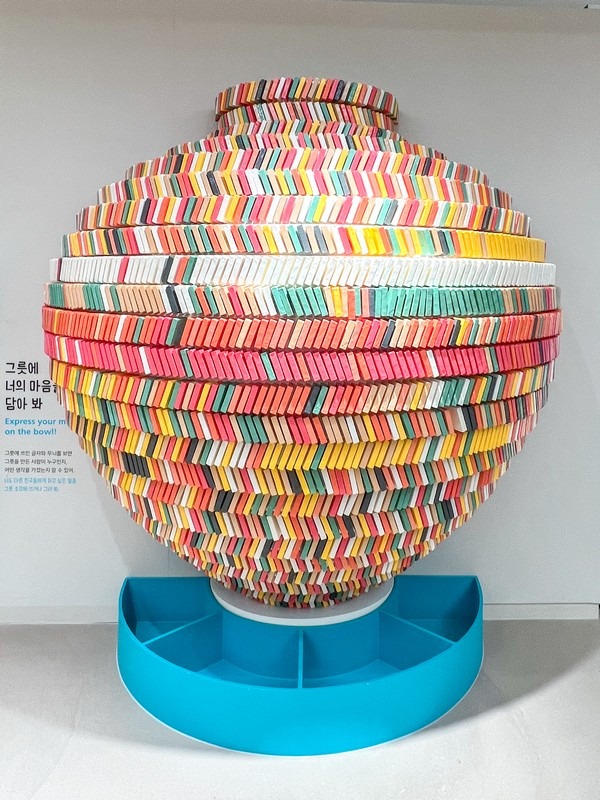
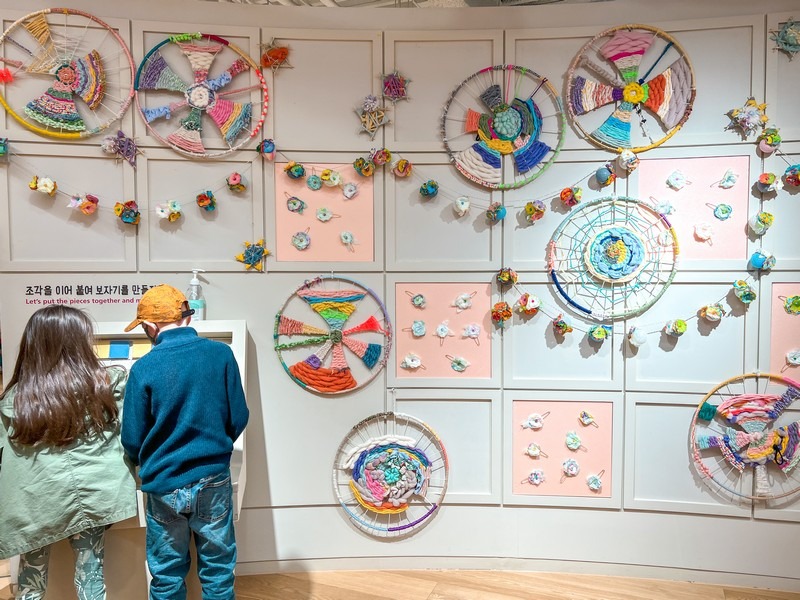
There is a lot to do in the numerous spaces in this free museum in Seoul. I definitely recommend making time for a visit.
Did you like this post? Pin IT!
